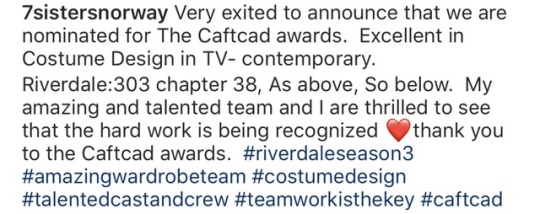#caftcad
Text

caftcad CAFTCAD is excited to present a conversation with @fks_designs and the costume heads behind Netflix's hit series, Avatar: The Last Airbender! From sketch to screen, Farnaz and her team will dive into the creative process, inspiration, and craft that went into developing the costumes for this beloved series.
Farnaz will be joined by Kari Appelquist (Lead Cutter), Heather Schmit (Lead Breakdown FX), and Shelby Page (Lead Build FX/Leather Work) to discuss not only the costume design process, but all the other key elements and positions that make up a Costume Department.
Thank you to the Capilano University Costuming for Stage and Screen program for helping host this event!
Ticket sales end at 9am PT on event day. NO TICKETS WILL BE AVAILABLE AT THE DOOR. This panel event will be offered in-person on Sunday, April 20 in Vancouver, Canada as well as on Zoom.
#natla#atla#netflix avatar#netflix atla#avatar netflix#atla netflix#avatar the last airbender#farnaz khaki sadigh#kari appelquist#heather schmit#shelby page#caftcad#other social#instagram
2 notes
·
View notes
Text

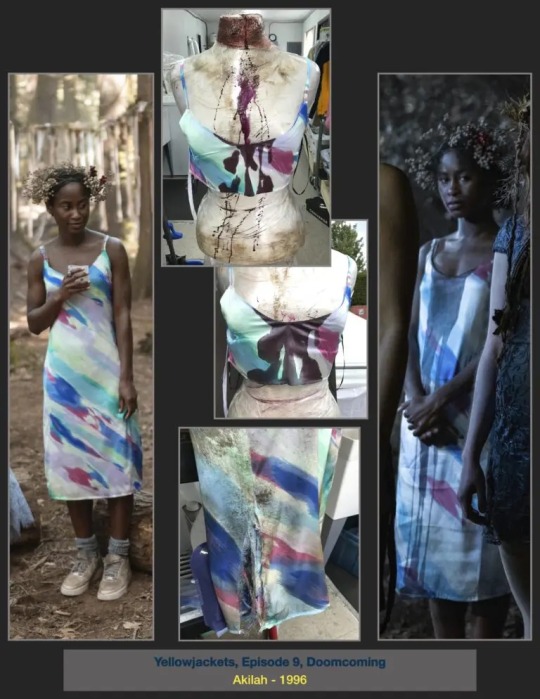

Behind the scenes photos of Mari, Akilah, and Lottie’s Doomcoming outfits from the 2023 CAFTCAD Awards.
#yellowjackets#costume#fashion#mari yellowjackets#lottie matthews#akilah yellowjackets#antler queen#props#doomcoming
132 notes
·
View notes
Text

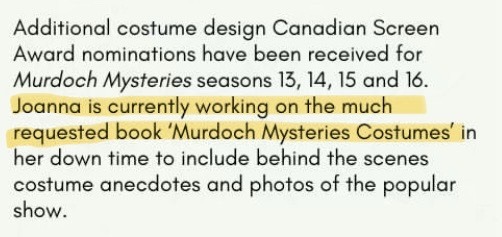
Joanna is currently working on the much requested book “Murdoch Mysteries Costumes”
source: CAFTCAD Instagram
🤩🤩🤩
21 notes
·
View notes
Link
Canadian actor Peter Keleghan and Samora Smallwood to host CAFTCAD Awards latest fashion news of Toronto, breaking fashion news, Canada fashion articles, designer interviews, latest fashion trends for men women
0 notes
Text
The Canadian Alliance for Film and Television Costume Arts and Design 2023 CAFTCAD Awards
#2023CAFTCADAwards
#redcarpet
#caftcad
#costumedesign
#costumedesigner
#toronto
#torontoevents
#nobis
#bermanandco
#iatse891
#iatse873makeup
#iatse873
#wardrobe
#film
#torontofilm
#costume

View On WordPress
#canadian fashion designers#clothes#clothing#current fashion trends#designer clothes#dress#dresses#Fashion#Fashion Art Toronto#fashion blog#fashion bloggers#fashion blogs#fashion design#fashion designer#fashion designers#fashion images#fashion model#fashion models#fashion news#fashion photographers#fashion photography#fashion pictures#fashion runway#fashion show#fashion shows#fashion websites#fashion week#toronto fashion#toronto fashion week#women clothes
0 notes
Text
0 notes
Photo
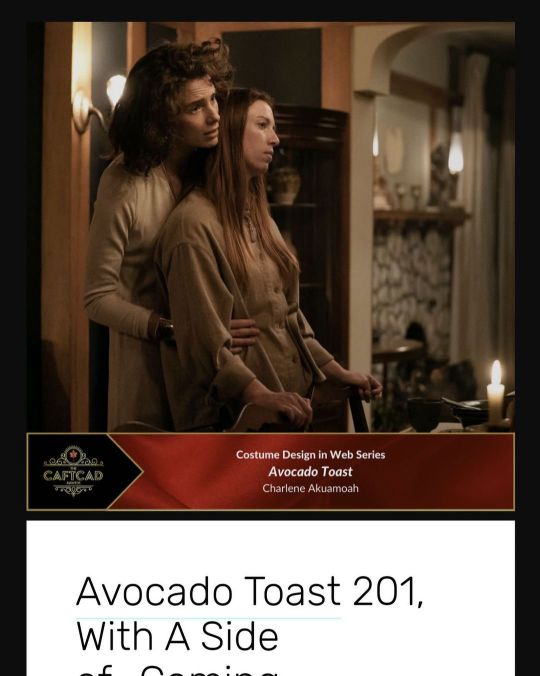
We had the privilege to work with Costume Designer Charlene Akuamoah on Avocado Toast season 2 and the secret is out - she's a creative force. We wish we could keep her talent, positive energy, infectious humour and professionalism all to ourself but who are we kidding? ⠀ ⠀ Charlene is destined to continue an incredible creative adventure in her career and we'll count ourselves lucky when she's available to join our team. ⠀ ⠀ Congratulations on your CAFTCAD Award nomination Charlene, we've got fingers, toes and eyes crossed for a win at the Canadian Alliance of Film & Television Costume Arts & Design awards in March.⠀ ⠀ #Costume #design #wardrobe @BellFund @OntarioCreates @CMF_FMC @theIPF @OUTtv @CAFTCADAwards @CAFTCAD https://www.instagram.com/p/CnXjz4ePPu1/?igshid=NGJjMDIxMWI=
0 notes
Link
#Thom Allison#Sharron Matthews#canada#canadian#onlyincanadayousay2#canadian tv#canadian tv show#canadian actor#actor#killjoys#killjoys space#killjoys stars#frankie drake mysteries#frankiedrakemysteries#Flo Chakowitz#Canadian Alliance of Film & Television Costume Arts & Design#CAFTCAD#first annual#awards#tv show awards#Canadian celebrities#sexy canadians#canadian men#canadian women#tv stars
6 notes
·
View notes
Photo
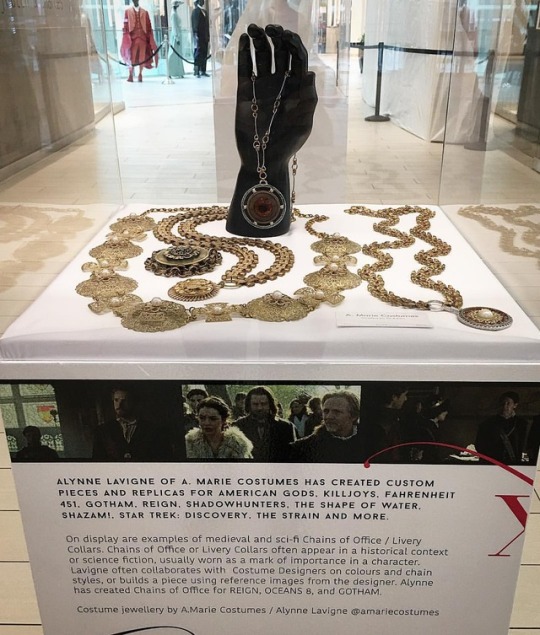
Don’t miss the 10th Anniversary @caftcad exhibit in @yorkvillevillage, on until September 30th, “From Concept to Creation” featuring costumes from TV & Film made by CAFTCAD members across Canada including pieces from @killjoys @startrekcbs @shapeofwatermovie @annewithane @cbcmurdoch @superflymovie @holdthedark and many more! Don’t miss the jewellery cases, I’m displaying some Chains of Office and some science fiction 3D designed pieces. 🧝♂️ . . #ConcepttoCreation #CAFTCAD #TOFW #YorkvilleVillage #CAFTCADMember #CostumeDesign #CostumeArts #Costumer #FilmCostume #TVCostume #Toronto #TO (at Yorkville Village) https://www.instagram.com/p/Bn-HhUrH4cl/?utm_source=ig_tumblr_share&igshid=1mbrvqvgdliry
#concepttocreation#caftcad#tofw#yorkvillevillage#caftcadmember#costumedesign#costumearts#costumer#filmcostume#tvcostume#toronto#to
1 note
·
View note
Text
Bending the Costumes: Avatar: The Last Airbender with Costume Designer Farnaz Khaki-Sadigh
After many years of anticipation, Avatar: The Last Airbender has finally hit Netflix. Being such a beloved franchise, there was much pressure for the team behind this adaption to get things right. It’s a move that has already been rewarded with two more seasons on the way! One of those artisans who felt that pressure was Emmy-Award-winning costume designer Farnaz Khaki-Sadigh. In an interview just before the series’ release, Farnaz talked with me about the Avatar: The Last Airbender costumes, sharing insights into how she brought the iconic characters to life, the real-world inspirations behind the designs, and her hopes for what audiences will take from the series.
Special Note: Our friends at CAFTCAD are hosting a conversation with Farnaz Khaki-Sadigh on Saturday, April 20th, 2024. From sketch to screen, Farnaz and her team will dive into the creative process, inspiration, and craft that went into developing the costumes for this beloved series. Follow this link to purchase your tickets for this online and in-person conversation.
Spencer Williams: I am so excited to welcome costume designer, Farnaz Khaki-Sadigh. I’m so excited to talk to you!
Farnaz Khaki-Sadigh: I am so excited to be here.
Spencer Williams: Well, I just have to warn you. I’m a big nerd, and I especially love Avatar: The Last Airbender.
Farnaz Khaki-Sadigh: I’m glad to hear. I’m a big fan of the show myself, so I love talking about it.
Spencer Williams: Well, let’s start from the beginning. Avatar: The Last Airbender is such a beloved story, obviously, and I don’t think I know anyone who has seen the original series and doesn’t like it. What was your initial reaction to taking on this project? Was there excitement, a bit of nervousness, maybe all of the above?
Farnaz Khaki-Sadigh: I’m a huge fan of the show. I watched it when it first came out and have probably seen it dozens of times since then. When the live-action adaptation was announced, I knew I wanted to work on it more than anything else. I kept saying that’s the show I want to be a part of, and when I finally got the interview and the job, it felt surreal. Even now, it feels incredible to wake up and realize I get to work on a show I’m so passionate about. It’s like a dream come true.
Spencer Williams: I can’t even imagine that feeling. It’s such a big show. A key part of this is staying true to the authenticity of the original animation. How did you balance maintaining the established designs while adapting them to a real-world setting? Since what works in animation doesn’t always translate directly to live-action filming, were there any specific challenges you faced in this process?
Farnaz Khaki-Sadigh: There were numerous challenges in adapting the show. While everything can be easily achieved in illustrations or animation, it’s much harder to translate those designs to real life and put them on an actual person.
There were many adjustments to be made, such as dealing with different fabrics that don’t move in the same way as illustrated or animated versions. Given that the show involves a lot of movement and technicality with the bending art form, we needed to choose fabrics and materials that moved and flowed with the bending while ensuring the actors were comfortable performing in them.
We also had to align the designs with the real-world inspirations, cultures, and periods the show is based on, such as mid-to-late 19th-century Southeast Asia, East Asia, and Indigenous cultures of that era. This required extensive research, testing, mock-ups, and blending of different materials to create a unique and cohesive look.
At the same time, we aimed to honor the original animation and stay true to the characters that fans loved. It was about finding the right balance to keep the characters and their designs as close to the original.
Spencer Williams: With that, you’re looking at characters, and you’re looking at the animation. Do you feel like there were moments where you could take creative liberties as well?
Farnaz Khaki-Sadigh: There were a lot of those moments! There were many elements we wanted to retain from the original show because they are iconic to the characters and important to include in the live-action adaptation. For example, Katara’s necklace, Sokka’s necklace, Aang’s cape, and color palette are crucial to their characters. Gyatso’s necklace also plays a significant role in a pivotal moment when Aang realizes Gyatso is gone.
We wanted to stay true to these iconic elements, but we also had to consider the cultural and historical aspects of the nations that inspired the story and world. It was important to base the looks on real-world cultures and maintain authenticity while staying faithful to the original animation.
Spencer Williams: That brings me to my next question. I never really thought about this until preparing for this interview, but the original animation was inspired by real-world cultures. Can you share insights into your research process for translating the animated world into a live-action setting? What were the key cultural and historical inspirations that influenced your costume design for each nation?
Farnaz Khaki-Sadigh: I started by examining the original inspirations for the animation. I looked at the different cultures the creators considered when designing the characters, and from there, I delved further into research. I expanded on the nations they chose and conducted a more in-depth study of their historical aspects, including the materials they used, their trading routes, and the historical events occurring during that period in that part of the world.
I also considered how various factors, such as color palettes, represented different statuses and socioeconomic backgrounds. From there, I built the worlds based on these real-world inspirations.
For example, Omashu is heavily influenced by Indian and Afghan cultures, as well as other parts of Central Asia. We also incorporated elements from Mesopotamian influences. We examined the region’s trading routes and connections with other countries at the time to understand what goods and influences were brought into that part of Asia. This research helped us create a look for Omashu that draws from these cultural and historical contexts.
Spencer Williams: It’s so exciting. The original series came out when I was a kid, and I watched it on and off back then. At the time, I didn’t really think about the influences and history that inspired the show. Now, as adults, we get to rewatch it and see it through a new lens, which is really exciting.
Farnaz Khaki-Sadigh: It was very much a historical lesson for me too! For all of us.
Spencer Williams: Can you tell me about your collaboration with the show creator, Albert Kim?
Farnaz Khaki-Sadigh: Albert Kim and I collaborated closely throughout the process. When I first got hired, I prepared a presentation for him as part of my research to secure the job. Once I got the position, he sent me a detailed inspiration booklet with write-ups, images, and ideas about the direction he wanted to take the show.
We had many discussions about his vision, such as how closely to adhere to the color palettes of the original animation and whether to take a more realistic approach or find a balance in the middle. We spent several months going back and forth on these points.
As I began creating illustrations and sketches and conceptualizing the worlds, we reviewed fabric swatches and conducted tests to find the ideal materials for the characters. It was a collaborative effort to achieve the perfect balance for the series.
Spencer Williams: It sounds like such a thorough process! Each nation has its own unique aesthetic, color palette, and background. What are some of the key elements that make each nation distinct from the others? For instance, Sokka and Katara’s looks feature lots of blues and fur. What elements make each of the nations feel unique?
Farnaz Khaki-Sadigh: Each nation has its own distinct world. The Southern Water Tribe, for example, they are isolated due to the war and have limited connections with other nations. We wanted to reflect that by using materials they have access to, such as animal furs, skins, and bones. We also drew inspiration from the ocean and icebergs, incorporating teals, whites, and blues into their world.
For the Air Nomads, they are peaceful and focused on natural elements. We used only natural fibers and materials like wood, cotton, linen, and natural dyes. Their color palette is based on fall colors, inspired by the changing leaves and the natural earth tones.
When it comes to the Fire Nation, my primary inspiration was the volcano and its eruption. The colors of lava, ash, and smoke were incorporated into their aesthetic, with a mix of dark hues, reds, oranges, and brightness. The Fire Nation is powerful and well-connected, allowing them to access a variety of materials from other parts of the world, which gives them more diversity in their appearance compared to the more insular Water Tribe and Air Nomads.
Spencer Williams: I love it. It sounds like color was a big part of your process.
Farnaz Khaki-Sadigh: Absolutely.
Spencer Williams: I imagine that working with the actors who portray these beloved characters must have involved a great deal of collaboration. Let’s talk about a few of them, starting with Aang. As the main character and the last airbender, the story revolves around him. What was it like working with Gordon Cormier to create his costume?
Farnaz Khaki-Sadigh: We actually designed Aang’s costume before the actor was cast. Once Gordon was chosen, we tested various materials on him to ensure he had the freedom of movement needed for his airbending actions. We wanted the materials to move fluidly with his bending and accurately portray the character’s abilities.
Gordon was still growing at the time, so we went through many variations of his costume. Although the look remained consistent, we often had to adjust his wardrobe—sometimes making new pants or shirts—because he was growing throughout filming. Even within weeks, we would have to build him new pants or a new shirt just because he was growing as we were going.
Spencer Williams: What a task! But all of the work very much paid off. Another character I find endlessly fascinating is Prince Zuko, played by Dallas James Liu. He comes from the Fire Nation, which, as you mentioned, is volcanic, dark, and kind of industrial. But this character that also has a lot of emotions and quite the story arc. So, how did you create a costume for Prince Zuko, and how did it add to the storytelling?
Farnaz Khaki-Sadigh: So we begin with Zuko, who is very much shielded. His armor is both literal and metaphorical, representing the facade he maintains as the perfect son and prince. This is reflected in his stiff and protective appearance.
As the story progresses, he gradually starts to shed these layers. He goes through a journey of self-discovery, trying to figure out who he is, where he belongs, and what he truly wants. He must decide whether to live his life according to his beliefs or follow the expectations set by his nation and his father. He’s a complicated character. But one of the best.
Spencer Williams: Yes, very complicated, for sure. My favorites though, are Katara and Sokka. I mean, they’re just classic characters that I believe everyone loves. What was it like working with these two characters? There is no way you weren’t excited as a fan!
Farnaz Khaki-Sadigh: I mean… yes! And they’re literally Katara and Sokka in real life. It was amazing. The cast was phenomenal to work with. The moment Ian Ousley walked in, he was Sokka. Even during his initial mock fitting with canvas pieces, he instantly became Sokka. It made dressing him so easy because he naturally fit the character’s essence.
Spencer Williams: Did you feel like there was an energy on set where everyone was as excited to be a part of this?
Farnaz Khaki-Sadigh: Everyone who worked on the show either became a fan during the process or was already a fan going in, so there was a sense of awe every day.
Spencer Williams: It’s so exciting. There were so many costumes in this series, as well as impressive armor. I was blown away. You must have had an incredible collaborative team to manage all of that. How did you all pull it together?
Farnaz Khaki-Sadigh: It was a lot of long days, weekends, and nights, but I had an amazing team working with me to bring these beautiful looks and my visions to life. It was the biggest team I’ve worked with in my career so far—over 92 people just in my department.
That doesn’t include our outsourced vendors; this was just within our studio team. We had a huge group of talented individuals who poured their hearts and souls into the project. Everyone was dedicated to creating a great product, and I believe that really shows in the final result. I’m incredibly proud of everything they’ve accomplished and very proud of my team.
Spencer Williams: You should be proud because it turned out brilliantly. By the way, where did the filming take place?
Farnaz Khaki-Sadigh: It was all filmed in Vancouver. The cast and crew were mostly from Vancouver, with a few from Alberta. We have many talented people here, even if they don’t always get the recognition they deserve. It’s wonderful to showcase their amazing work.
Spencer Williams: Right, Vancouver is a great location with lots of incredible artisans. Farnaz, this is such a great series, and I’m thrilled with how much I love it. There’s a lot of pressure with a show like this. What did this project mean to you personally and professionally?
Farnaz Khaki-Sadigh: Farnaz Khaki-Sadigh: Personally, as a huge fan of the show, bringing the animated world to life meant so much to me. It was a major achievement and a professional milestone. Being a designer is something I’ve dreamed of since I was a little girl. I’ve worked hard to push boundaries, and this was a big step forward in my career. It gave me a chance to show what I can do and what I want to continue doing.
Spencer Williams: That’s amazing. What do you hope the fans will take away from the series?
Farnaz Khaki-Sadigh: I hope the series inspires them and that they enjoy it. I also hope it encourages them to learn more about other cultures and parts of the world to understand and appreciate our diverse, beautiful world. I hope it prompts people to travel, learn about history, and expand their horizons beyond their immediate surroundings.
Spencer Williams: That’s a beautiful sentiment. Thank you so much, costume designer Farnaz Khaki-Sadigh. It’s been a pleasure speaking with you. I’m so happy for you and your team, and I’m excited for the world to see your work.
Farnaz Khaki-Sadigh: Thank you!
#natla#atla#netflix avatar#avatar the last airbender#netflix atla#avatar netflix#atla netflix#farnaz khaki sadigh#interview#the art of costume
3 notes
·
View notes
Photo
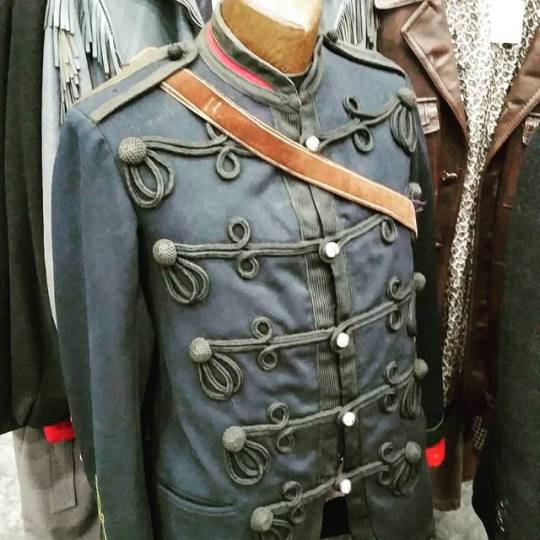
Finding some cool historical fashion down at the wardrobe sale! This one's a genuine antique from 1860!
#thestrainfx#riversideto#findyourtreasure#toronto#caftcad#thestrain#leslieville#kingpinshideaway#thebeaches#eastendtoronto#riverdaleto#to#moviewardrobesale#vintagetoronto#torontosale#caftcadevent#torontoevents#clothingsaletoronto#vintageclothingsale#moviesale
40 notes
·
View notes
Video
Hélène Joy looking divine at the CAFTCAD awards 2020 - March 1st, 2020
Video from her public instagram story
#Helene Joy#Hélène Joy#caftcad awards#let's relieve the tension in the MM fandom by just looking in awe at this human being#how does she keep surprising me with her beauty#idk
22 notes
·
View notes
Photo

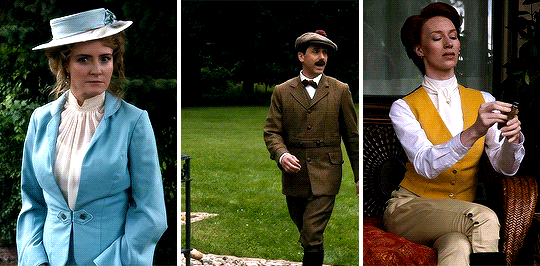


MURDOCH MYSTERIES — 13x02 "Fox Hunt"
CAFTCAD Award Winner for Costume Design in TV, Period
Costume Design by Joanna Syrokomla
#murdoch mysteries#murdochmysteriesedit#canadian tv#costume design#perioddramaedit#perioddramasource#weloveperioddrama#tvedit#filmtv#13x02#mmxiii#*edits#julia ogden#thomas brackenreid#ruth newsome#margaret brackenreid#rupert newsome#lucinda helmsworthy
195 notes
·
View notes
Photo
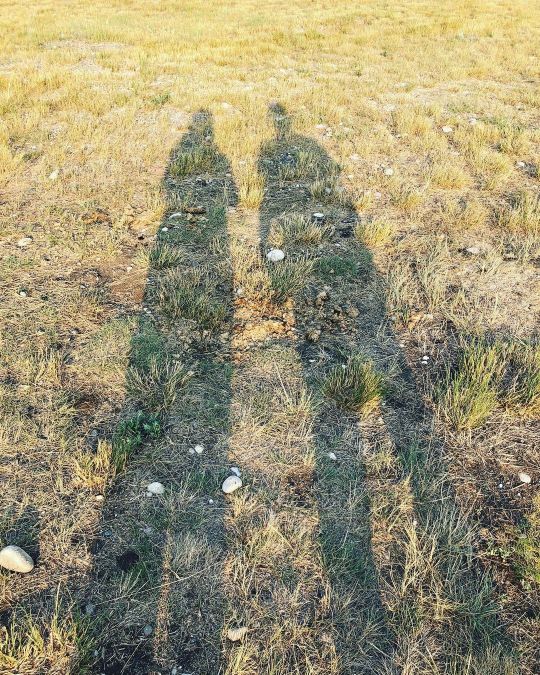
cynthiasummers: City gals on location “so Kelsey…are those grasshoppers or crickets…”
•
#costumersonlocation #circuschat or #basecampchatt but we in #canada🇨🇦 #howdotheykeepthierhatsoninthiswind #oohhhlookatthattractor #ohhhitsaprairiedog #whatarethosefieldsofyellowflowers #areweontherightroad #nightshoot #asthesungoesdown🎶 #yeha
•
#costumedesigner @cdglocal892 @caftcad @iatselocal212 @iatse891 #roadshow
7 notes
·
View notes

